What do the ancient sources tell us about Khadijah. Was she a pagan or a Christian before she converted to Islam?
Transcript
Hello, I am Dan Gibson and this is another video in the Question and Answer series. Today’s question is: What about Khadijah? In the last few months, a lot of things have been said about Khadijah on the Internet. She is a controversial figure because of her role as the first wife of the prophet Muhammad. And today some people are analyzing her life according to the standards and expectations of the 21st century. Some want to elevate Khadijah to a very honorable level, perhaps like sainthood. I have seen someone else posting a video, suggesting she was a Christian. And there is even a suggestion that an old building in Mecca in Saudi Arabia was Khadijah’s house.
So in the next few minutes we are going to examine what the early source materials tell us about Khadijah. First, the traditionally accepted account: Khadījah bint Khuwaylid, born around AD 555 and died in 619 CE. Her father, Khuwaylid ibn Asad, he was among the leading men of the Quraysh tribe who lived in and around the Holy City of Islam. Based on the archeological evidence that all of the extant mosques of the first century of Islamic history faced Petra in southern Jordan, I understand that Khadijah was born and raised in the Petra area. So I will refer to Petra throughout this video, even though the original sources use the name Mecca, which I also believe referred to the city of Petra at this time. But that topic is dealt with in other videos.
Khadijah’s mother, Fatima bint Za’idah, died in 575 CE when Khadijah was 20 years old. Her mother was a member of the ‘Amir ibn Luayy clan of the Quraysh and thus a third cousin of Muhammad’s mother.
According to some traditions, Khadijah’s father died in 585 CE in the Sacrilegious War, when Khadija was 30 years old, and she took over her father’s business. Not all of the hadith writers agree on this, and others argue that he was still alive when Khadijah married Muhammad in 595 when she was 40 years old. Her father Khuwaylid also had a sister named Um Habib bint Asad.
We are not told anything about her younger years, except that at the age of 30 she found herself in a position of managing her father’s business, using camels for long distance merchant trade. In other words she was a business woman. We have no idea how large or small her business was when she inherited it, but in time Khadijah’s caravan equaled the caravans of all other traders of the Quraysh put together. (Muhammad ibn Saad, Tabaqat vol. 8. Translated by Bewley, A. (1995). The Women of Madina, p. 10. London: Ta-Ha Publishers.)
Now in the Petra Scrolls we find that it was popular to award people of the city with honorific titles. And so it comes as no surprise to find in the Islamic records that she was known “Amerat-Quraysh (“Princess of Quraysh“).” People also called her “The Pious One,” and also “Khadijah Al-Kubra (“Khadijah the Great”).” It is said that even though she was wealthy, she fed and clothed the poor, and assisted her relatives financially and provided marriage portions for poor relations.
It seems that Khadijah did not travel with her camels, but managed their routes and loads from just outside Petra, which was a hub for merchant caravans. I personally doubt that camel caravans were managed from the core of the city, but rather they would come and go from some place outside of the city proper. Just as today’s industrial areas are usually on the outskirts of or cities, not downtown.
Khadijah herself did not travel with the caravans, but she employed others to trade on her behalf for a commission. When she was 40 years old (595 CE) Khadijah needed someone to manage a transaction in Syria. She chose Muhammad ibn Abdullah for the trade in Syria. With the permission of his uncle Abu Talib ibn Muttalib, Muhammad was sent to Syria with one of Khadijah’s servants named Maysarah. This caravan-experience earned Muhammad the honorific titles “Al-Sadiq (“the Truthful”)” and Al-Amin (“the Trustworthy” or “Honest”). Khadijah then hired Muhammad, who was then 25 years old, paying him double her usual commission. (Muhammad ibn Saad, Tabaqat vol. 1. Translated by Haq, S. M. Ibn Sa’ad’s Kitab al-Tabaqat al-Kabir, p. 145–146. Delhi: Kitab Bhavan.)
When the caravan returned, the servant Maysarah gave accounts of the honorable way that Muhammad had conducted his business, with the result that he brought back twice as much profit as Khadijah had expected. I am sure this must have delighted Khadijah and she saw in Muhammad a solution to one of her problems. As a wealthy single, older woman (she was 40 years old which in Arabia is an older woman) I am sure she was pestered by all the old men of the city, exploring if they could marry her… for her money of course.
Muhammad offered a solution. He was honest and trustworthy. And so she proposed to him.
Now there are two accounts of her marriage, the Sunni account and the Shia account. And they are very different. First, the Shia account:
Ibn Shah-rashub quoted from al-Sayyid al-Murtada in al-Shafi and al-Shaykh al-Tusi in al-Talkhis that Khadijah was a virgin when she married Muhammad. In addition, considering the cultural and intellectual situation in Hijaz and high position and status of Khadijah al-Kubra among other people, it would be highly improbable that she would marry men from Banu Tamim and Banu Makh-zum (the two “lower” tribes).
The Shia’s say that the two children attributed to Khadijah were the children of Hala, Khadija’s sister. After Hala’s husband’s death, Khadijah took care of Hala and (after Hala’s death) Hala’s children were part of her household.. Most Shia records say that Khadijah was 40 when she was married to Muhammad. However, some sources also claim that she was 25-28 and one source claimed she was 30. (Ibn Saad. Al Tabaqat Al Kubra. pp. Vol.8 page 13, and Al-Hakim Abu‘Abdullah. al-Mustadrak. pp. Vol.3, 200 No. 4837.)
That was the Shia accounts.
The Sunni’s tell a different story. They claim that Khadijah was married twice before she married Muhammad, and that she had children from all her marriages. While the order of her marriages are debated, it is generally believed that she first married Atiq ibn ‘A’idh ibn’ Abdullah Al-Makh-zumi and later married Malik ibn Nabash ibn Zar-gari ibn at-Tamimi. To her second husband she bore two sons, who were named Hala and Hind. This husband died before his business became a success. To husband Atiq, Khadijah bore a daughter named Hindah. This marriage also left Khadijah as a widow. (Al-ṬabarīVolume 9)
Khadijah proposed to Muhammad when he was 25 years old and she was 40 years old. Khadijah consulted her cousin Waraqah ibn Nawfal ibn Asad ibn ‘Abdu’l-‘Uzza.
Khadijah entrusted a friend named Nafisa to approach Muhammad and ask if he would consider marrying. When Muhammad hesitated because he had no money to support a wife, Nafisa asked if he would consider marriage to a woman who had the means to provide for herself, and no need for him to support her.
Muhammad agreed to meet with Khadijah, and after this meeting they consulted their respective uncles. The uncles agreed to the marriage, and his uncles Hamza ibn Abdul-Muttalib and Abu Talib accompanied Muhammad when asking for his bride. There is some argument over which of these uncles went with Muhammad, or if both of them did.
I don’t know if that will ever be settled, but on several occasions I have gone with a young man to ask for a girls hand in marriage. My personal experience is that the young man gathers all the support he can get, so all of his uncles, any relative in a respected position, and even someone like myself, a local scholar, gets invited. The more support he can demonstrate, the better his position will be.
I remember one home time when we knocked on the door of a family that had three young eligible girls. We were a group of 12-15 men. The youngest daughter opened the door, and her eyes got really big when she a young man with all these respected gentlemen behind him asking to see her father.
We were ushered in to the sitting room. So we all crammed in, and sat waiting while there was a lot of rustling in the back room making tea or whatever. I found it fascinating that each of the eligible young ladies of the house managed to bring some serving item into the room so they could glance at the young man. From the amount of whispering and giggling I am sure that they still didn’t know which sister he would be asking for. They were just behind the door and we could hear a little bit of them while we were sitting in the other room.
We had a nice visit with the father, and discussed everything from the weather to politics, but never broached the topic of marriage. Then we all stood up, said our goodbyes and headed for the door. At the door the oldest uncle said his goodbye, and then said, ‘Oh, by the way, we came to ask for the hand of your daughter in marriage.” So we were all invited back in again, and this time the marriage was discussed, with lots of haggling over how well prepared the young man was to support a bride. Later I learned that the first part of the visit established that there was good blood between the two families. Nothing was brought up that would cause an argument between them. If an argument had started, then no marriage request would have been made.
Over the years I not only had the opportunity to attend several of these visits, but also to have a hand in the actual negotiations, representing a young woman who had no father or older uncles who could represent her. And so I can only imagine that Muhammad would have taken both of his uncles along, to strengthen his case, for he was not asking Khadijah, he was asking her uncle, who would have the role of protecting her honor and that of her tribe.
According to Sunni records Muhammad was 25 years old and Khadijah was 40 years old, and they had a successful marriage for 25 years until the death of Khadijah. It was only after her death that Muhammad took other wives and multiple wives. There is one report that states “Hisham bin Muhammad bin al-Sa’ib reports from his father Muhammad bin al-Sa’ib al-Kalbi from Abu Salih that Ibn ‘Abbas said: At the time of marriage with the Messenger of Allah, Khadija was twenty-eight years old” but this disagrees with the bulk of Sunni writers who say she was 40 years old.
Muhammad and Khadijah may have had up to eight children together. Al-Ṭabarī names eight, Ibn Ishaq, names seven children, but most sources only identify six.
Their first son was Qasim died after his third birthday, then followed four daughters, and finally a son, AbdAllah who also died in childhood.
Two other children also lived in Khadijah’s household: Ali ibn Abi Talib, the son of Muhammad’s uncle; and Zayd ibn Harithah, a boy from the Udhra tribe who had been kidnapped and sold into slavery. Zayd was a slave in Khadijah’s household for several years, until his father came to Mecca to take him home. Muhammad insisted that Zayd be given a choice about where he lived, and Zayd decided to remain where he was, after which Muhammad legally adopted Zayd as his own son.
Now all of this is in introduction to Khadijah and the role she played in Muhammad’s life.
After their marriage, Khadijah continued her role of managing the overall operation of the caravans, but Muhammad, not having a place in the business, was very much free to do as he pleased. He becomes a person of note in the city, when he is present during the reconstruction of the Ka’ba building as is chosen by chance to be the one responsible to place the Black Stone into its place at the corner of the building.
Sometime after this, he was spending time in a secluded holy spot near the city. It was a place where the pagans would go to meditate and contemplate, and to pass out food or small amounts of money to passing poor people. In that place, Muhammad had an experience that shocked him. A form appeared to him and commanded him to read or recite. It was a very difficult experience, and right afterwards he felt he had either become crazy, or he had seen a spirit of some kind. He decided to go out and kill himself.
And so he decided to climb the nearby mountain and throw himself off of the cliff face and die. As he was climbing, the apparition appeared to him again, blocking his way. After several attempts to climb the mountain so he could throw himself off, people came by and they took him home to Khadijah.
Muhammad was very disturbed and unsure what was going on.
Khadijah then consulted her Christian cousin, Waraqah ibn Nawfal who confirms that Muhammad may have seen something holy. It is right about this time that the eastern churches are starting to adopt Marian theology, and a church in Petra becomes the Church of Mary. So perhaps Waraqah is very aware of special appearances and wonders if this is one of them.
But Muhammad is still not convinced, so Khadijah consults others and comes back with a pagan test to see if it was an angel that Muhammad saw or something evil. Al-Ṭabarī tells the story: Vol 6: starting on page 72. Khadijah says to Muhammad: Can you tell me when this companion of yours who visits you comes?” He replied, “Yes,” and she said, “Tell me then, when he comes.” Gabriel came to him as before, and the Messenger of God said to Khadijah, “Khadijah, here is Gabriel who has come to me.” She said, “Yes? Come and sit by my left thigh, cousin.” He came and sat by her, and she said, “Can you see him?” He replied, “Yes,” and she said, “Move around and sit by my right thigh.” He did so, and she said, “Can you see him?” He replied, “Yes,” and she said, “Move around and sit in my lap.” He did so, and she said, “Can you see him?” He replied, “Yes.” Then she was grieved, and flung off her covering while the Messenger of God was sitting in her lap. Then she said, “Can you see him?” and he replied, “No.” At that she said, “Cousin, be steadfast and rejoice. By God, this being is an angel and no devil.”’
From this story we learn a little of how Khadijah thinks, and how she calls on pagan rites to help her, not Christian rites, and when she bares herself or exposes herself the apparition leaves and she assumes that it was an angel and not a satanic being.
There are other things that tell us that Khadijah was a pagan and not a Christian. Ahmed Ibn Hanbal (Musnad Vol 4) tells us that Khadijah, the wife of the prophet had the idol of al-‘Uzzā in her house in pre-Islamic times. In the Book of Idols, Hisham ibn al-Kalbi speaks of the prophet Muḥammad worshiping al-‘Uzzā: We have been told that the Apostle of God once mentioned ‘Uzzā saying, “I have offered a white sheep to al-‘Uzzā, while I was a follower of the religion of my people.”
Ibn Kathir repeats this in his Tafsir on the Quran. Ibn Hanbal adds to the story that Muhammad and his wife used to worship it just before bedtime. Additionally, whenever Muḥammad complained that he was affected by the Evil Eye, Khadijah used to send for an old elderly woman, a sorceress to charm it away.
There is absolutely no evidence that Khadijah was ever a Christian. Those who say this come to this conclusion because she went to her cousin, Waraqah b. Nawfal who was a Christian. We know he was a Christian because he would write out scriptures for people who wanted a copy. He would do this from memory. But this going to Waraqah was just normal, for Christians have records in their holy books about angels visiting people. Not the pagans. So naturally she turned to her Christian cousin, who had some instruction in Christian doctrine. But she also went to her pagan advisers as well. Her actions do not indicate that she was a Christian.
But not only was Khadijah a pagan in her early life, so was the prophet Muḥammad! This may offend Muslims who today hold that he was holy, right from birth. I think such an idea comes from later Muslims copying Christian doctrines.
Listen to what the early writers tell us. This takes place in Jahaliya. Muhammad has not yet had his vision. He is still a pagan. And he meets with people who pursue the religion of Abraham and worship only Allah and not the idols. Allah’s Apostle (that’s Muhammad) said that he met Zaid bin ‘Amr Nufail at a place near Baldah. This had happened before Allah’s Apostle received the Divine Inspiration. Allah’s Apostle presented him a dish of meat. Zaid bin ‘Amr refused to eat of it and then said, “I do not eat of what you slaughter on your stone altars (Ansab) nor do I eat except that on which Allah’s Name has been mentioned on slaughtering.”
So here is a story of Muhammad before receiving his message, having a plate of food that was offered to idols. Al-Kharqushi records it this way:
The Prophet slaughtered a lamb for one of the idols (nusub min al-ansab). Then he roasted it and carried it with him. Then Zayd ibn Amr ibn Nufayl met us in the upper part of the valley; it was one of the hot days of Mecca. When we met we greeted each other with the greeting of the age of Jahalyia. The Prophet said: “Why do I see you, O son of Amr, hated by your people?” He said, “This is without my being the cause of their hatred; but I found them associating divinities with Allah and I was reluctant to do the same. I wanted the religion of Abraham…” The Prophet said, “Would you like some food?” He said, “Yes.” Then the Prophet put before him the (meat of the lamb). Zayd ibn Amr said: “What did you sacrifice to, O Muḥammad?” “He said, “To one of the idols.” Zayd then said: “I am not one to eat anything slaughtered for a divinity other than Allah!”
So here we clearly read that in the time of Jahiliyah the Prophet Muhammad slaughtered a lamb to the idols. It was he who slaughtered the lamb to the idols.
Remember, in his pre-Islamic days, Muḥammad was surrounded by idols. This is why years later he returned to cleanse the idols from the Ka’ba area. When he was chosen as a young man to place the Black Rock into the corner of the Ka’ba he doesn’t object to the presence of other idols. There were 359 other idols in that place. So it is obvious that before she converted to Islam, Khadijah was also a pagan. That is what all of the early Islamic records tell us. Anyone who claims otherwise simply does not know their Islamic history very well. These things are not hidden; they are plainly recorded by the earliest recorders of Islamic history.
We will end here, and I will make a second video on the life of Khadijah, and examine the location in Saudi that is often called Khadijah’s house.
I am Dan Gibson, and this has been another video in the series Archeology and Islam.
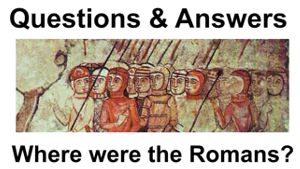

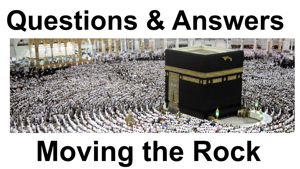
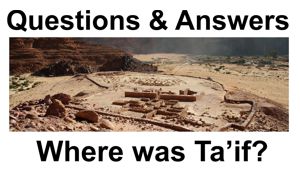
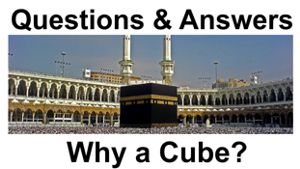

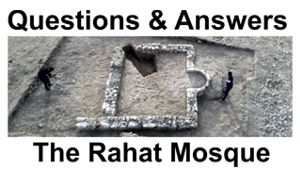
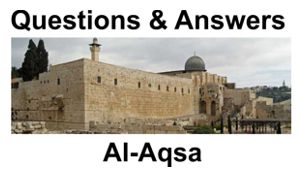
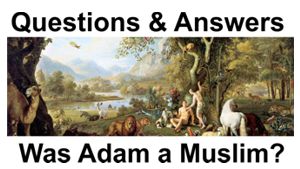

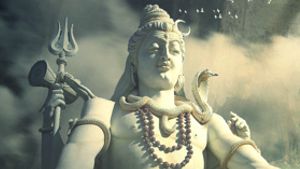


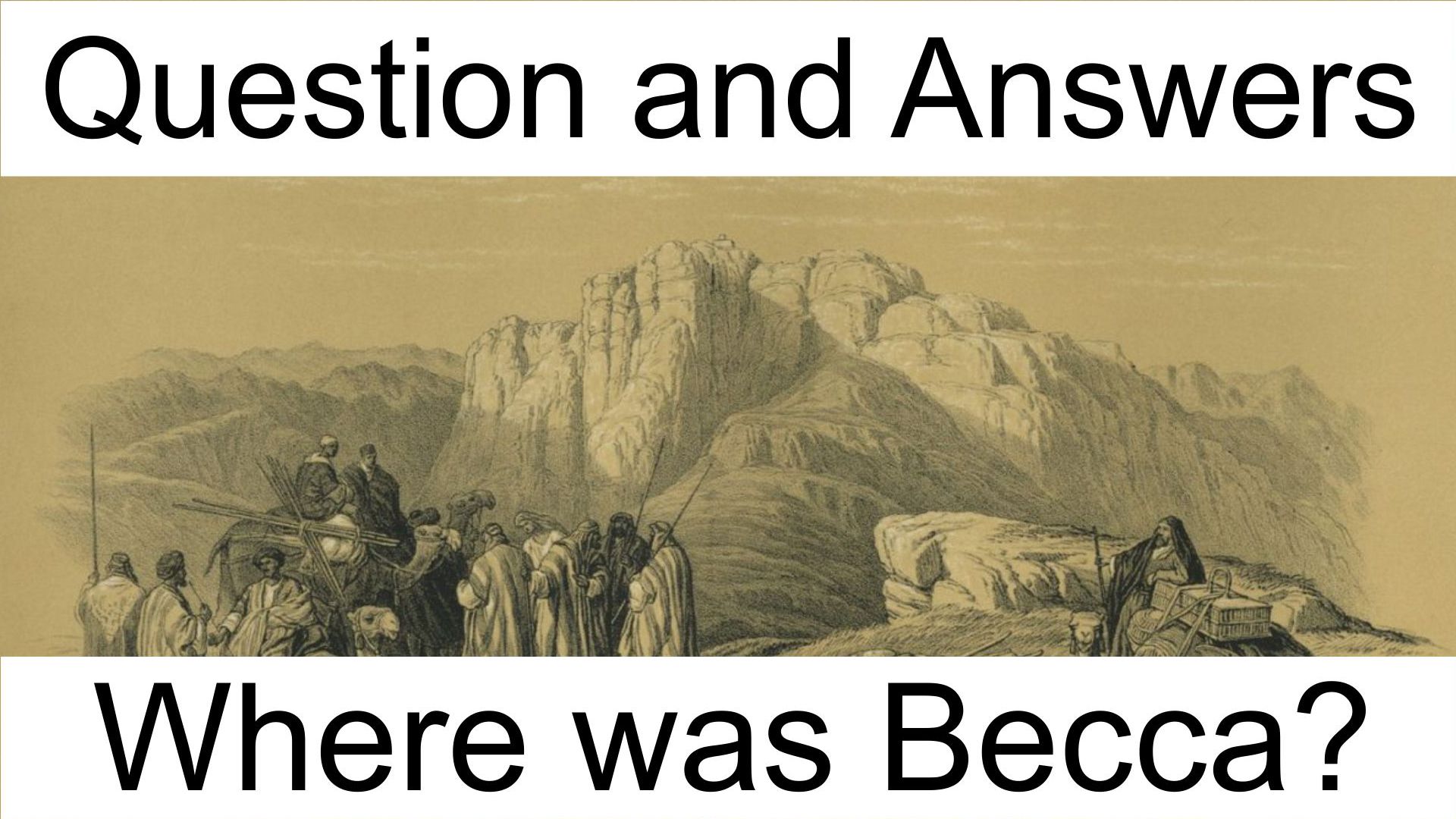
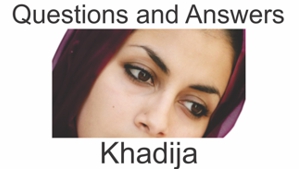
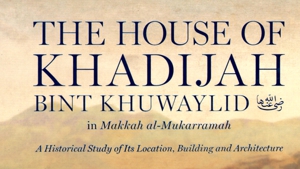
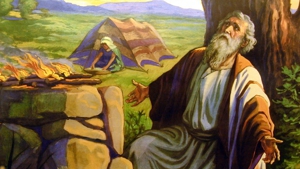
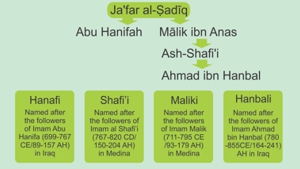

Page Discussion
Membership is required to comment. Membership is free of charge and available to everyone over the age of 16. Just click SignUp, or make a comment below. You will need a user name and a password. The system will automatically send a code to your email address. It should arrive in a few minutes. Enter the code, and you are finished.
Members who post adverts or use inappropriate language or make disrespectful comments will have their membership removed and be barred from the site. By becoming a member you agree to our Terms of Use and our Privacy, Cookies & Ad Policies. Remember that we will never, under any circumstances, sell or give your email address or private information to anyone unless required by law. Please keep your comments on topic. Thanks!